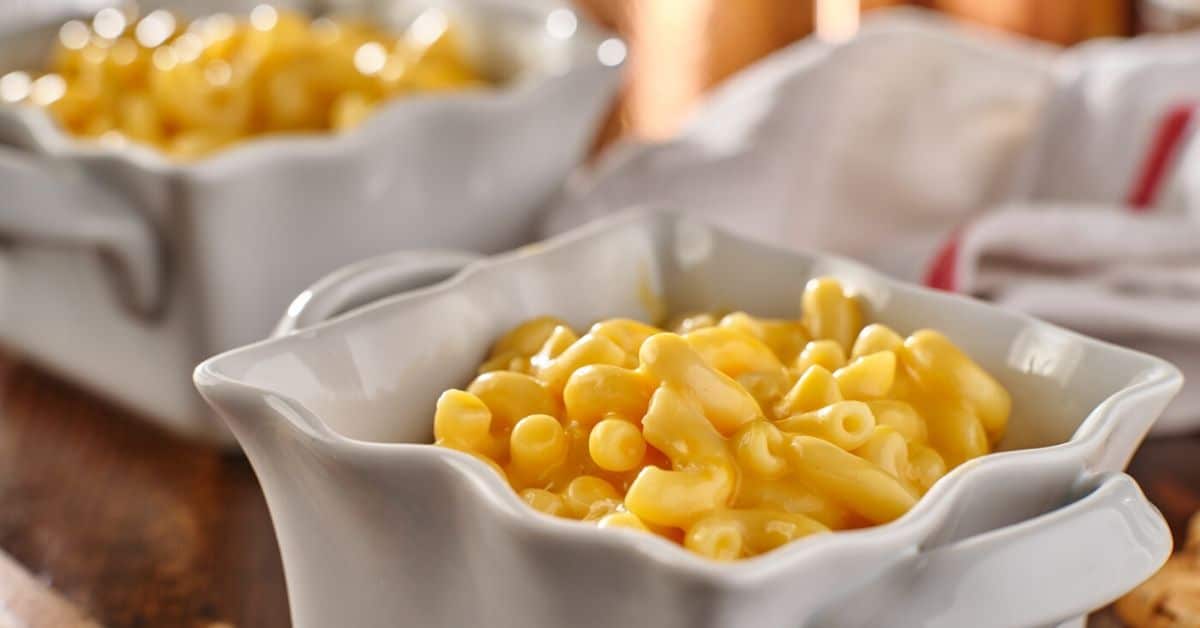Briefly, yes, lasagna can be frozen, either cooked or unbaked, but it is important to use a freezer-friendly dish, cool it completely, and wrap it well to prevent freezer burn.
Cheesy, melty, meaty layers of pasta who can resist a good lasagna?
This popular Italian dish is a world-wide favorite and often prepared in large batches. This is great for big family gatherings, but can also mean lots of leftovers.
Another thing that makes lasagna such a popular dish for big events and catering is that it freezes well.
That means you can prepare your favorite lasagna recipe in bulk beforehand for stress free dinners on busy days. You can also keep baked lasagna leftovers without worrying that your comforting meal will go to waste.
Although you can successfully store lasagna in the freezer, there are a few important factors to keep in mind to make sure you get the best results at mealtime.
Here is everything you need to know about freezing lasagna.
Can Lasagna Be Frozen?
Yes, you can freeze lasagna (both meat and vegetarian types) successfully. Freezing it is a wonderful way to have ready-made meals on hand when there is no time or energy for cooking. You can freeze cooked lasagna or unbaked lasagna.
The best way to freeze lasagna is to prepare all the ingredients, layer them in the baking dish, and then freeze. This way you can bake the lasagna when ready to eat but still develop the crisp cheesy topping, freshly baked taste, and firm texture.
You can freeze leftover lasagna, but the texture can sometimes be slightly soggy once thawed and reheated.
If you know you are going to freeze the lasagna, it is important to use a freezer-friendly baking dish that can also be heated in the oven.
A disposable aluminum foil pan is a perfect option since you can freeze, heat, and then discard the dish without worrying about it cracking due to temperature changes or needing dishes that are occupied in the freezer for other food.
Placing a hot lasagna into the freezer is never a good idea.
Not only does this drop the temperature of your freezer which compromises the quality of other stored items, but condensation results in the formation of large ice crystals on freezing. This will cause freezer burn and ruin the texture and flavor of the lasagna.
Always ensure you wrap lasagna completely when freezing with no gaps where air or moisture can enter.
How To Freeze Lasagna
Step 1: Cool
Whether you are preparing a cooked lasagna specifically for freezing or storing leftover lasagna, let the dish cool completely before preparing it to go into the freezer.
Step 2: Wrap
Once the lasagna is completely cool, wrap it in two layers of plastic wrap. Wrap the entire dish, making sure there are no open gaps where air can enter.
You need to keep the lasagna protected from contact with air and moisture as much as possible to prevent freezer burn. Now wrap the entire top of the fish with a layer of heavy duty aluminum foil.
If you are freezing individual servings, you can wrap them in plastic wrap and heavy duty foil, and then place them into a resealable freezer bag. Alternatively, store the wrapped portions in freezer-friendly airtight containers.
Step 3: Label
To avoid piercing the packaging while labeling, write the date and contents on a sticker label or masking tape and stick the label on the foil wrapping before placing the dish in the freezer. This way you can keep track of how long your lasagna has been stored.
Step 4: Freeze
If you are freezing individual portions, or a disposable foil casserole dish, place the wrapped lasagna directly into the freezer.
If you are using an oven safe glass or ceramic baking dish, place the cooled, wrapped lasagna in the refrigerator first. After a few hours, transfer it to the freezer. This will prevent the dish from cracking due to extreme temperature changes.
How To Thaw Frozen Lasagna
To ensure even cooking, it is best to thaw the entire lasagna before baking. Place the lasagna in the refrigerator to defrost overnight.
To cook lasagna once thawed, remove it from the refrigerator and let it warm to room temperature while you preheat your oven to 180˚C/350˚F.
Remove the plastic wrap and place a new piece of foil over the top. Place the baking dish on a baking sheet in the oven to prevent spills. Bake the lasagna for 60 to 70 minutes or until fully baked. Remove the foil and bake for a further 10 minutes or until the top is browned.
Individual portions can be reheated in the same way, however, the baking time will be shorter due to the smaller size.
FAQs
Conclusion
Lasagna must be one of the most deliciously comforting tried and true favorites out there, and the best part is, it can stand as a dish on its own. If you’re in a hurry on a weeknight and there is no need for frills, just heat one dish, and you’re done!
To ensure the best quality preservation of lasagna in the freezer, always make sure it is cooled to room temperature before wrapping and keep it in airtight packaging.
Although there are many ways you can reheat lasagna, the oven is always the best option. After all, lasagna really is all about that delicious crusty cheesy baked topping.
Up next:

*image by fotek/depositphotos









